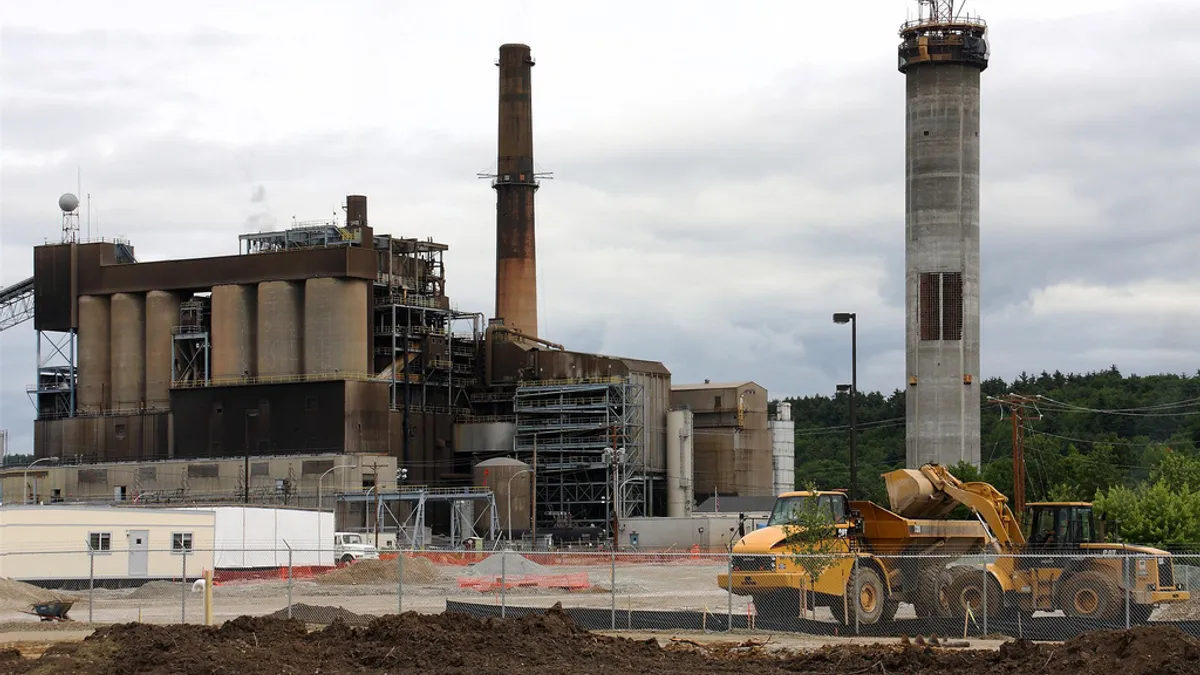Dive Brief:
- The retirement of coal and nuclear capacity in New England has paved the way for growing amounts of gas-fired and renewable generation, SNL Energy reports.
- Capacity auctions have already replaced generation from Massachusetts' Brayton Point coal facility and the Pilgrim nuclear plant, both of which will shutter in the next two years.
- The two plants combine for 2,200 MW of generation, but the loss will be more than absorbed by an expected 3,500 MW of gas-fired additions.
Dive Insight:
SNL Energy has taken a look at the capacity situation in New England, predicting that gas-fired generation could be 60% of the region's power by 2020, with renewable energy picking up most of the growth thereafter. The news outlet said new gas capacity will include 675 MW in the next reliability year, almost 1 GW in 2018 and 1,800 MW in 2019.
But in total, more than 4,000 MW of nuclear, coal and oil capacity is being retired in the next three years, including the 1,500-MW Brayton Point facility in 2017 and the 680-MW Pilgrim nuclear plant in 2019.
ISO New England could face potential supply shortages within two years, the grid operator said earlier this year. The region needs new energy infrastructure, including pipelines that would meet growing demand for natural gas for both heating and power generation. In 2000, natural gas supplied just 15% of the grid's power, but since then the total has risen to almost half — some 49%.
But in April, Kinder Morgan announced it had scrapped plans for its Northeast Energy Direct pipeline, a $5 billion project designed to move Marcellus Shale gas into the northeast. Company officials cited "insufficient contractual commitments" from customers in the New England markets. The Northeast Energy Direct pipeline was supposed to be online by the end of 2018. The Market Path component of the project would have had capacity of 1.3 Bcf/d and would have run almost 190 miles from Wright, to Dracut, Massachusetts.














